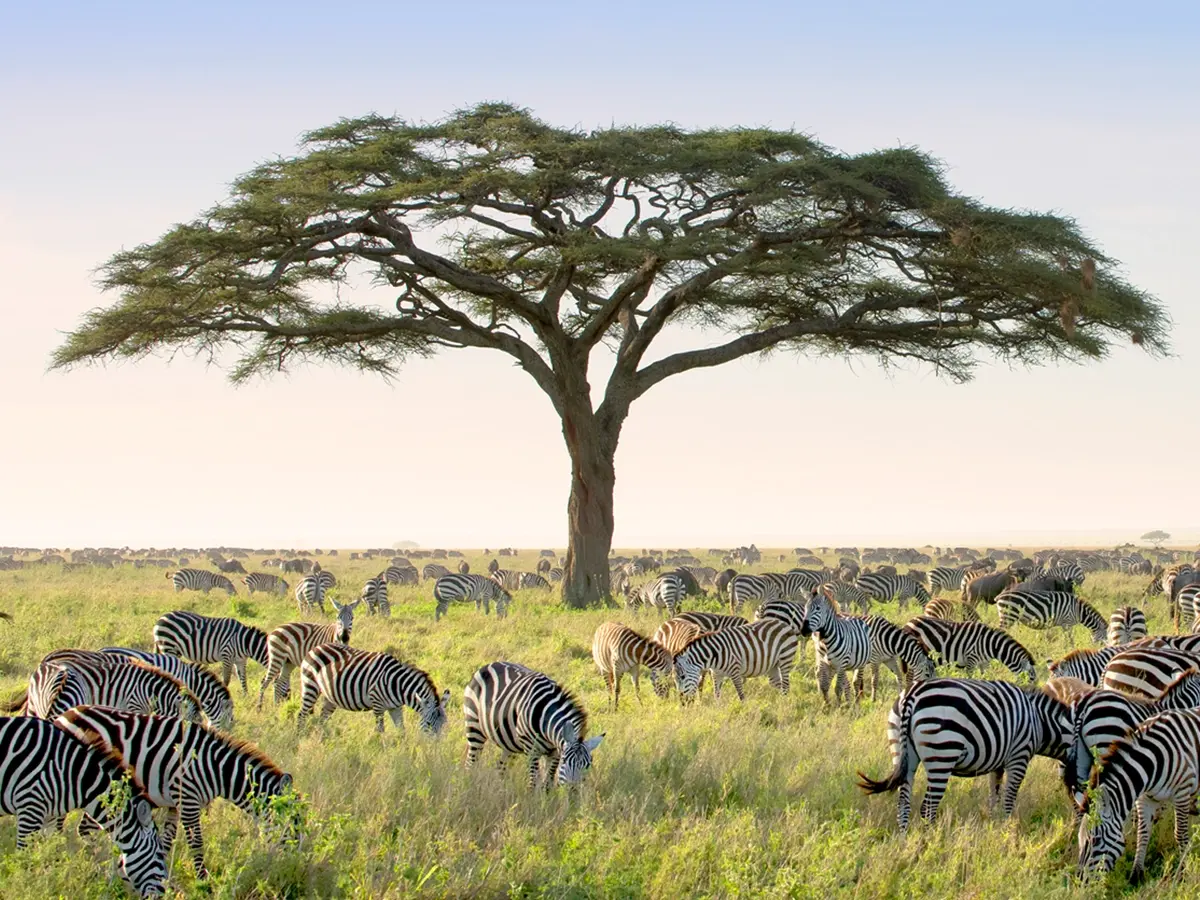
In Africa’s heart lies the Serengeti, a vast land of breathtaking beauty and rich biodiversity. Among its most striking features are the acacia trees, standing tall and resilient against the backdrop of the savannah. These trees play a crucial role in the ecosystem, providing food and shelter for countless species.
When you picture Africa, you likely imagine wide-open plains dotted with acacia trees. These trees, with their distinctive shape and towering presence, are iconic symbols of the continent’s wilderness. In the Serengeti, they thrive amidst the harsh conditions, showcasing nature’s ability to adapt and endure.
Join us as we delve into the world of Serengeti’s acacia trees, exploring their importance and marveling at their beauty amidst Africa’s stunning landscape.
Acacia trees are synonymous with the African savannah, and the Serengeti showcases their prominence with pride. Belonging to the genus Acacia, these iconic trees boast a staggering diversity, comprising over 1,000 species spread across various habitats worldwide. Yet, it’s in the Serengeti where their presence truly shines, adorning the landscape with their distinctive silhouettes and serving as vital lifelines for numerous species.
African acacia species are marvels of self-sufficiency, equipped with formidable defenses. Some species host stinging ants within their hollow thorns, dissuading herbivores from feasting on their leaves. Moreover, certain trees possess an innate ability to detect threats, swiftly releasing potent toxins to deter or even harm potential attackers.
The umbrella-shaped canopy commonly found in many acacia species showcases their impressive evolutionary adaptation. This unique feature has been finely tuned for maximum sunlight absorption, allowing these resilient trees to thrive amidst the harsh and competitive environments of the African savannah. Complemented by their small, efficient leaves, acacias optimize sunlight utilization, ensuring their survival and dominance in this unforgiving landscape.
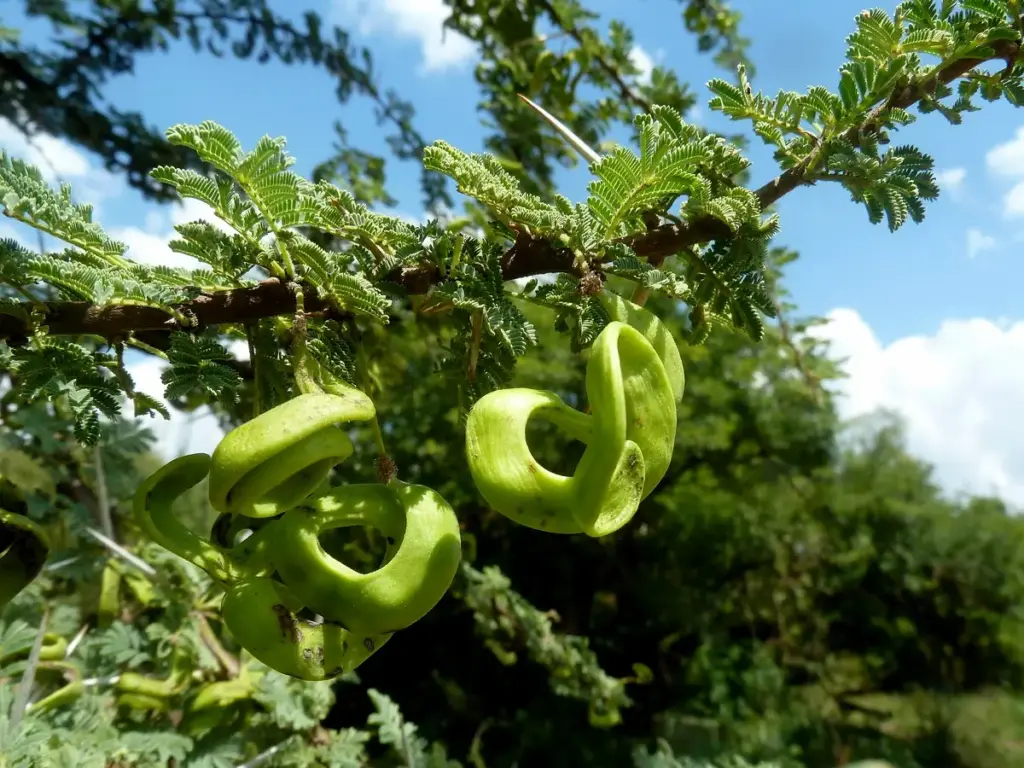
With its sprawling canopy resembling an open umbrella, the Acacia tortilis stands as a towering emblem of resilience in the face of harsh conditions. What sets this species apart is its long, twisted thorns, which adorn its branches like nature’s barbed wire. Yet, despite its formidable appearance, the Umbrella Thorn Acacia harbors a hidden treasure: its sweet, nutritious pods are a coveted delicacy for a multitude of herbivores, including giraffes and elephants.
Interesting Fact: The Umbrella Thorn Acacia has adapted to survive wildfires by evolving fire-resistant bark, allowing it to endure the periodic blazes that sweep through the savannah landscape.
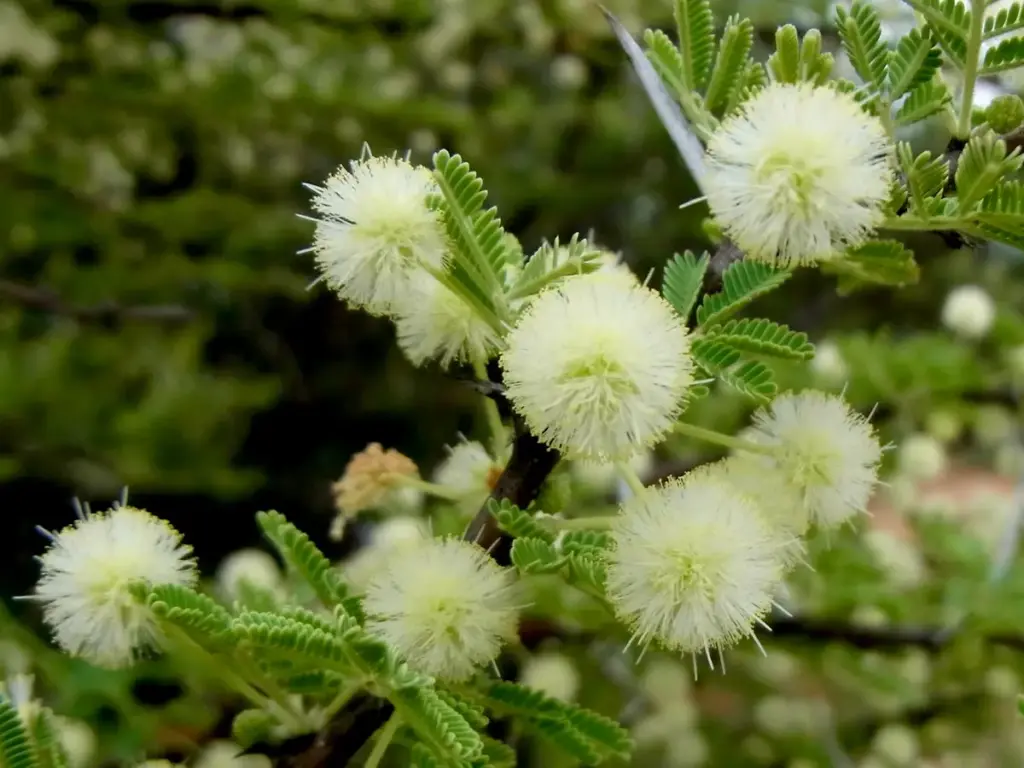
As the sun dips below the horizon, a fragrant breeze wafts through the air, carrying the sweet scent of the Acacia nilotica’s blossoms. This species, adorned with clusters of creamy-white flowers, exudes an intoxicating perfume that beckons pollinators from far and wide. Its thorny branches serve as both a fortress against browsing herbivores and a sanctuary for nesting birds, showcasing the dual nature of its protective adaptations.
Interesting Fact: Traditional healers in Africa have long utilized various parts of the Scented Thorn Acacia for medicinal purposes, harnessing its bark, roots, and leaves to treat ailments ranging from fever to digestive disorders.
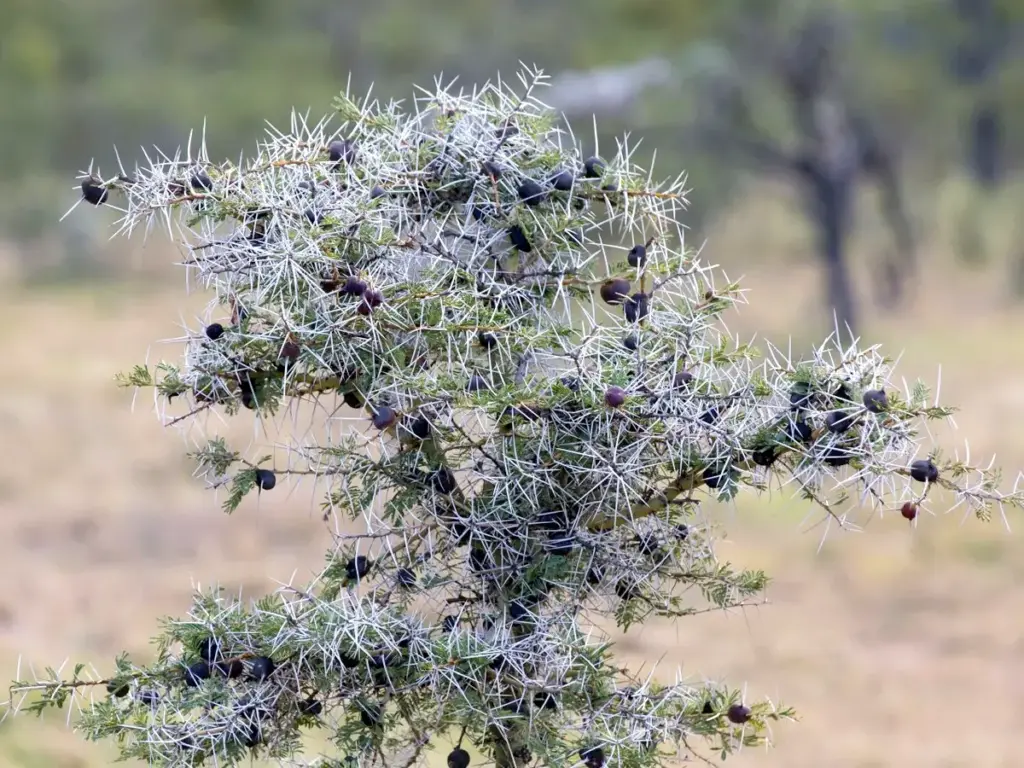
The Whistling Thorn Acacia is a master of deception, concealing a fascinating secret within its swollen, hollow thorns. These bulbous protuberances serve as abodes for colonies of symbiotic ants, which defend the tree against herbivores in exchange for shelter and sustenance. When disturbed, the ants emit a distinctive whistling sound by rubbing their bodies against the thorns, a phenomenon that has captivated researchers and nature enthusiasts alike.
Interesting Fact: The relationship between the Whistling Thorn Acacia and its resident ants is so mutually beneficial that the tree produces specialized nectar glands to feed the ants, ensuring their continued protection.
Beyond their striking appearance and intriguing adaptations, acacia trees play a multifaceted role in shaping the Serengeti ecosystem. Here are some of how they contribute to the intricate web of life:
The nutritious foliage, pods, and flowers of acacia trees serve as vital food sources for a diverse array of herbivores, ranging from towering giraffes to diminutive dik-diks. During the dry season, when food is scarce, these trees become oases of abundance, sustaining countless species through times of hardship.
Acacia trees provide more than just food; they offer shelter, shade, and sanctuary for a multitude of creatures. From nesting birds seeking protection from predators to lizards basking in the warmth of the sun-dappled branches, these trees harbor life in all its forms, fostering biodiversity in the Serengeti.
Through their complex root systems and interactions with soil microorganisms, acacia trees play a crucial role in nutrient cycling and soil fertility. Their presence alters the physical and chemical properties of the soil, creating microhabitats that support the growth of other plant species and contribute to the overall resilience of the ecosystem.
Indigenous communities have long relied on these trees for various practical purposes, such as providing shade from the scorching sun, crafting tools and furniture from their sturdy wood, and utilizing their medicinal properties for treating ailments.
Beyond their utilitarian value, acacia trees carry rich symbolic meanings. They are often associated with resilience, as they thrive in arid landscapes, where other vegetation struggles to survive. This resilience resonates deeply with East African communities, symbolizing their ability to overcome adversity and persevere through challenging circumstances.
In the Serengeti region, acacia trees feature prominently in local folklore and myths. One prevalent belief among indigenous communities is that acacia trees serve as conduits between the earthly world and the world of spirits. According to Serengeti folklore, certain acacia trees are inhabited by protective spirits known as “maasai,” guardians of the land and its inhabitants. These spirits are believed to bestow blessings upon those who honor and respect the natural environment, while also warding off malevolent forces.
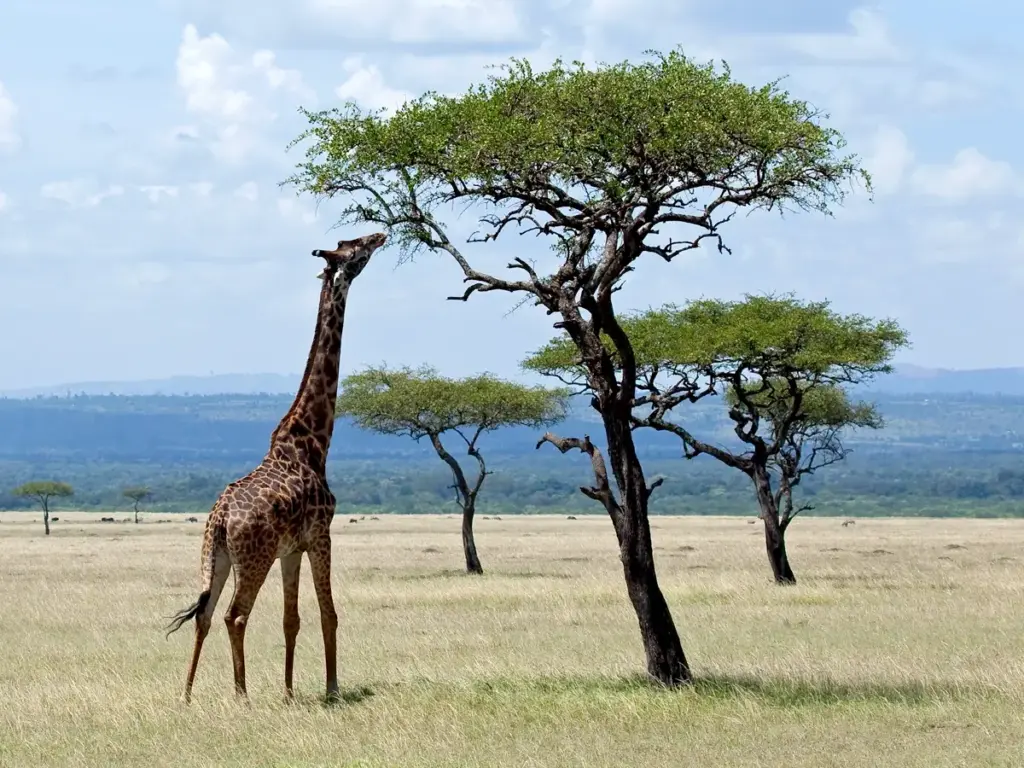
In conclusion, when we contemplate the remarkable presence of acacia trees in the Serengeti, it becomes evident how interconnected every aspect of this landscape truly is. From the towering Umbrella Thorn to the intricate Whistling Thorn, each species of acacia contributes significantly to the flourishing biodiversity of the region.
At One Nature, we deeply grasp the importance of safeguarding cherished places like the Serengeti. Our mission extends beyond mere appreciation; we strive to cultivate widespread awareness regarding the critical need to preserve our natural world. Through our educational endeavors and advocacy, we endeavor to inspire collective action and foster a sense of responsibility toward the conservation of these invaluable ecosystems.
Furthermore, we recognize that the preservation of the Serengeti’s ecosystems requires concerted effort and collaboration. By uniting individuals, communities, and organizations under a common goal, we can enact meaningful change and ensure the enduring protection of these remarkable habitats for the benefit of present and future generations alike.